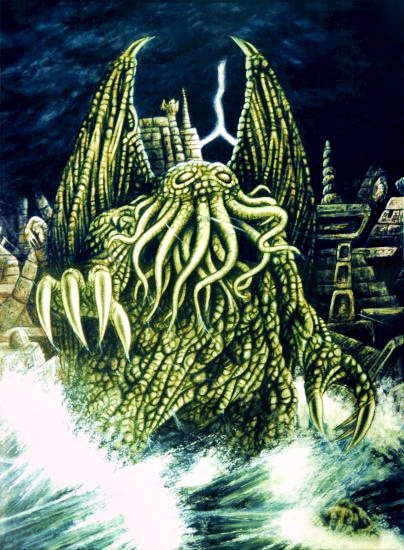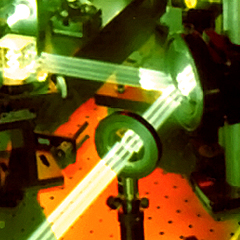In these articles, I try to highlight techniques that anyone with an interest in worldbuilding could use: start with a detail that intrigues or amuses you and build out (bottom-up); start with a conflict that moves you and build around it (conflict-first); take a pin, stab a map, and ask yourself, based on what you see, what’s happening there (map-first). However, sometimes I am purely, utterly going to geek out and share something not because you can use it, adopt it, or adapt it but simply because I am having far too much fun with it.
This is one of those times.
We’ve been digging into two new peer-reviewed astronomy papers. The papers are “A Preferential Growth Channel for Supermassive Black Holes in Elliptical Galaxies at z ≤ 2” (Duncan Farrah et al 2023 ApJ 943 133, https://arxiv.org/abs/2212.06854) and “Observational Evidence for Cosmological Coupling of Black Holes and its Implications for an Astrophysical Source of Dark Energy” (Duncan Farrah et al 2023 ApJL 944 L31, https://arxiv.org/abs/2302.07878). Let me say at the outset that plenty of scientists do not agree with the analyses and conclusions in these papers. We are not saying, “Hey, look, totally cool and reliable science!” We are saying, “Hey, look, Cthulu!”

Cthulu and R’lyeh created by Dominique Signoret, CC BY-SA 3.0
I will make a vigorous effort to keep the science overview to a minimum to save bandwidth for the science fiction. The first paper can be summarized with unfair brevity as, “How odd. Supermassive black holes in large, quiet elliptical galaxies appear to be growing a lot more massive than our models suggest they should, if you look over a long enough time span.” A lot more massive translates to a factor of 8-20 over roughly 8 billion to 9.5 billion years.
The second paper can be summarized, equally unfairly, as, “If black holes were objects with vacuum energy interiors, instead of being singularities, then they could grow more massive as a direct result of the expansion of the Universe, due to a phenomenon called cosmological coupling. Black holes that are singularities do not grow as a direct result of the expansion of the Universe. Our math suggests that cosmologically-coupled supermassive black holes with vacuum interiors in large, quiet elliptical galaxies would grow in mass by a factor of 8 to 20 times over roughly 8 billion to 9.5 billion years. That’s exactly the growth that was actually observed! This strongly suggests that supermassive black holes are cosmologically coupled objects with vacuum interiors. Even more exciting, as Croker and Weiner showed, supermassive black holes with vacuum energy interiors would add to the negative energy of the Universe as they grow more massive. This negative energy would accelerate the expansion of the Universe. It turns out that if we assume: all black holes have vacuum interiors; only black holes generate this energy; and black holes come only from the deaths of massive stars, then our model shows that across the lifetime of the Universe, all you need is energy from expanding black holes to explain all of the ‘dark energy’ we’ve been talking about for a while now.”
As I mentioned, these conclusions are being debated as I type but there’s the science.

Image of the shadow of the supermassive black hole in M87, courtesy of the Event Horizon Telescope Collaboration
On to the science fiction!
This is probably a good place to paraphrase Randall Munroe’s classic disclaimer: We are a pair of Internet game designers. We like it when Universes blow up and fall apart. That means that we do not have your best interests at heart. Don’t trust us, don’t use our suggestions in peer-reviewed research, and don’t try anything we suggest at home.
On to our insight: carefully tended, a vacuum-energy interior black hole might be the Universe’s longest-lasting energy source.
Here’s the idea. No matter what its interior looks like, a black hole is an indescribably huge amount of mass compressed into a very small space. No mass, no black hole. Stephen Hawking demonstrated that black holes could radiate energy (now called Hawking radiation). That radiating energy looks like a 3D rain of subatomic particles (e.g., electrons) falling into the Universe from the edge of the black hole. Those subatomic particles stole energy from the black hole to make it out into the Universe. Once in the Universe, they fly away, taking the black hole’s energy with them. The radiating black hole is losing energy. General relativity says mass and energy are interchangeable, so essentially, a radiating black hole is losing mass. Left to itself with no star dust to feed on or any other energy input, a black hole that radiates will evaporate over time. While it would be pleasant for the civilization hanging out nearby if this evaporation took place as a gentle dissolving, something like a Tums tablet fizzing in water, it’s more likely to end in a very large, very deadly explosion made of very hard radiation indeed as the black hole reaches some kind of unpredictable instability point.
Any civilization hanging out near one of these black holes could try to avoid the very large, very deadly explosion by adding energy to the black hole. The most obvious solution is to reflect those escaping subatomic particles back into the black hole. However, no reflection is perfect. Some particles will escape. The black hole will continue to evaporate, just more slowly. The civilization in question could supplement the black hole’s “diet” by adding another energy stream—point lasers at it, for example—or by tossing some mass at it—a great garbage recycling program. Either way, this hypothetical civilization has to do work to save itself from the black hole. For a black hole made of a singularity, that’s the story.

A mirror will reflect radiation, such as this laser light, but some energy is always lost. This public-domain image is courtesy of the US Air Force Research Laboratory’s Directed Energy Directorate.
BUT a vacuum-energy interior has a built-in energy input. The expansion of the Universe itself adds energy to the black hole.
Let’s say the vacuum-energy black hole is losing energy from Hawking radiating and it is gaining energy from the expansion of the Universe. Let’s say that, left to itself, the radiation is winning. The black hole is losing more energy than it is gaining, it is still evaporating, and it will still end in some messy explosion. But this civilization is hanging out near the black hole. This civilization constructs this elaborate scheme for reflecting the black hole’s radiation back in on itself. How? Using some highly advanced technology which works very well, thank you, of course.
No reflection is perfect. Some particles escape. No problem! The black hole is already getting extra energy: it’s being added by the Universe itself, free of charge. So, the civilization can balance the energy output and input and save itself.
In fact, it can do even better. It can use the energy of those escaping subatomic particles to power its own technology while keeping the black hole stable, thanks to the extra energy input from the Universe. This civilization now has an amazing, nearly perpetual energy source!
A vacuum-interior black hole doesn’t gain much energy from the expansion of the Universe. This is not a large perpetual energy source. It’s just a very, very long-lasting one.
How long lasting? How about: longer than the Universe it is sitting in?
Sure, we can imagine that. The Universe this civilization is sitting in dies slowly. Stars fade out. Light dims. The Universe cools down. Everything stops. But in one tiny region, a small amount of heat and light is generated by a carefully tended black hole. The beings who created the civilization have only a small amount of energy left. Knowing this end would come, they constructed vast cryogenic storage facilities, built to withstand practically anything. There, they rest.
That is not dead which can eternal lie.
But the story doesn’t end there. In another space, with different physical laws, something amazing happened: the biggest, most amazing thing that ever happened there. The space was born. The vibrations of this Big Bang shook all the nearby Universes. Boundaries between spaces with different physical laws got very thin, very briefly. They left their imprint, the fingerprint of the Multiverse, on this new space.
And in one small corner of the new, young Universe, there was a leak. A small piece of an ancient Universe poured through the leak. This ancient civilization, complete with its vacuum-energy black hole power source, came through.
In this fresh, young Universe, there’s plenty of energy around. This civilization was extremely far-thinking. Before settling down for their long slumber, they set up collectors to gather every drop of energy they could.
Now that the stars are right, those collectors are gathering their radiative energy, slowly filling massive power banks. Once those power banks are filled, they will trip a circuit that will slowly thaw and wake these ancient, powerful, sleeping beings. In the ancient place called R’lyeh, Cthulu will wake into a Universe ripe for devouring.
“When the stars were right, They could plunge from world to world through the sky; but when the stars were wrong, They could not live.”–Lovecraft

Cthulu and spaceship created by Cary Lewis Long, CC BY-SA 3.0
0 Comments